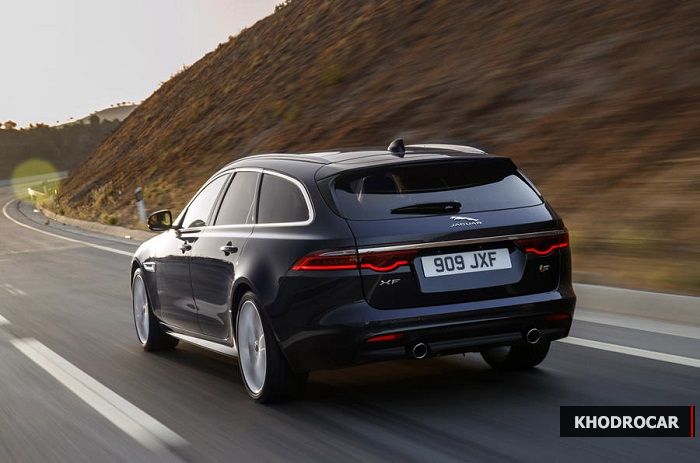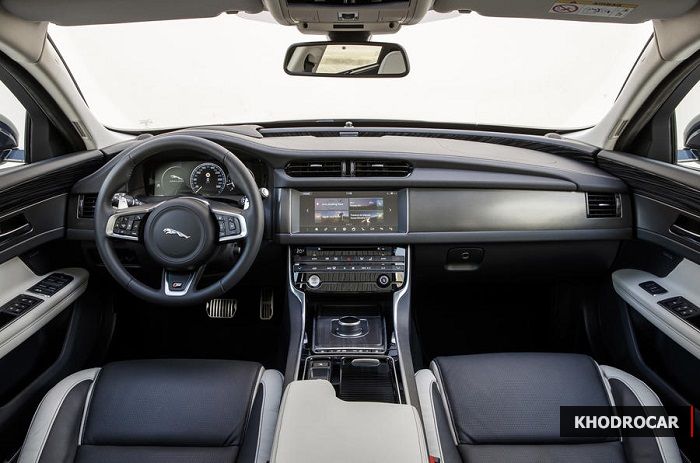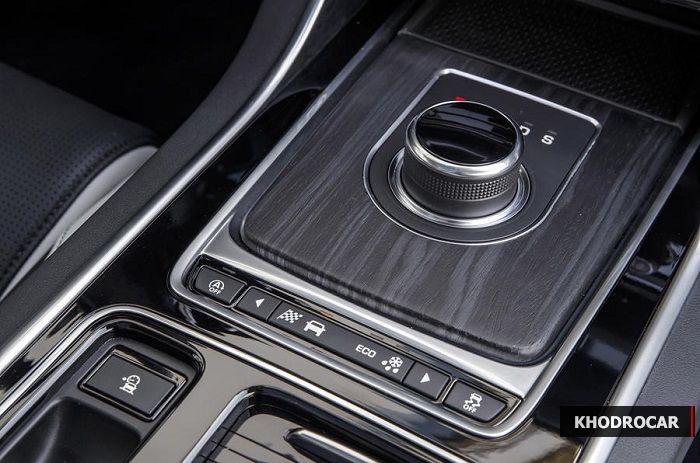The handsome Jaguar XF Sportbrake exhibits all the hallmarks that makes the saloon great, and with the silky smooth diesel V6 makes it a compelling choice.
Khodrocar - Last time around, we drove it with the 237bhp 2.0-litre diesel powerplant, which is mated exclusively to all-wheel drive. Here, we’re adding the 3.0-litre V6 diesel to that and the only petrol XF variant, the 2.0-litre 247bhp four-cylinder from the same Ingenium engine family as the diesel, both as rear-drive variants.

By calling this car Sportbrake, you might think the design team have been cut a little slack to prioritise style over practicality, but the important estatey numbers are pretty good. Boot volume with the rear seats up is 565 litres rather than the saloon’s 540, and with the seats down it raises to 1700 litres, which puts it on a par with the BMW 5 Series Touring, if not the vast Mercedes-Benz E-Class wagon. This time around, too, as well as flat sides to the interior of the boot, the rear seats have been tweaked to allow the floor to be flat when folded. The kind of thing that’s more useful, as a rule, than an additional five litres here or there.

Otherwise, things in the Sportbrake are as they are in the XF saloon. It’s a predominantly aluminium-structured car, with double-wishbones at the front and an integral link set-up at the rear. Unlike the saloon, the Sportbrake comes with air-springs at the rear to keep the body level under loads, which can be whichever fridge or dog you throw in the boot or up to 2000kg pulled via the towbar.
Let’s start with the latter. The XF has a pretty tidy interior that is stylishly designed but, depending on where you prod, you’ll find surfaces that just don’t feel quite so thudsome as in a German executive alternative. The Germans each make many millions of cars a year and you get the feeling that, with an A6, 5 Series or E-Class, they throw everything they’ve got at it. Jaguar will soon be doing around 200,000. You just get the vibe that Audi, BMW or Mercedes-Benz has more to give.
Then there’s the entertainment and information screens, from which you can draw a similar conclusion. There’s nothing inherently wrong with Jaguar’s touchscreen controller; it just feels a little slower, clumsier and less finessed than the best you’ll find elsewhere.

But then there are the bits that Jaguar does well, largely, I suspect, because it has terrible roads on its doorstep: bad surfaces, bad cambers, pronounced road crowns, tight corners around ancient hedgerows. There’s less of that in mainland Europe and it shows. The XF steers with terrific precision, it rides with impressive deftness and control. It blends refinement, poise and engagement better than any rival.

The 2.0 diesel powertrain we tested previously is endearing enough, but sufficiently grumbly that we’d recommend the 296bhp V6 over it if you can stand the extra bills. At 49.6mpg versus 48.7mpg, the official figures reckon the V6, rear-driven, will be less thirsty than the AWD 2.0 oil-burner. And given there’s less need for the eight-speed ZF auto to downshift in the V6, in the real world that difference might even be greater. (Although, if you need all-wheel drive, I guess you know it, and then the 2.0 diesel is your only option.)
Whether you choose the 2.0-litre petrol is, again, down to the bills. It's that bit lighter, smoother, quieter, more responsive and revvier than any of the diesels, but it’s a 41.5mpg car on the official fuel cycle. It's lighter in the nose, too, being that bit more agile than a car that’s already probably the most agile-feeling in the class.
Source: Autocar
Latest News


